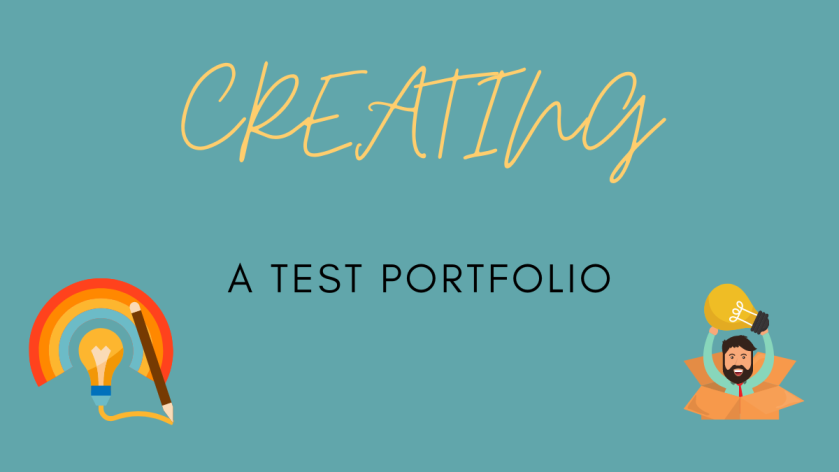It’s not uncommon to see articles and blog posts describing how to create an automation or development portfolio. A developers work is tangible and can be easily shown using GitHub or similar. However, for test engineers, the work we do is often challenging to showcase outside of our organization. We can’t carry defect reports, screenshots, or test cases with us as that is typically proprietary information. To overcome these challenges, in this blog post, I will focus on how a test engineer can build a tangible portfolio where you can display your amazing skills and be proud of everything you’ve accomplished and learned.
To begin, I want to briefly share my career experience as it pertains to this blog. Throughout my tenure in software development and testing, I’ve hired 50+ testers. Those range from onshore, offshore, contract, and full-time positions. Prior to hiring, I come to understand the gap I’m trying to fill with that hire, and the skills I’m looking for. The market is extremely competitive and setting yourself apart is more important than ever. In addition to organizing your accomplishments in one location, the suggestions below can also aid in setting you apart from the candidate pool.
Blogging
Blogging is a tried and true way of showing your testing experience. You should choose to write about a wide range of topics that allows the reader to understand the breadth of your knowledge. Using tools such as WordPress ensures you don’t have to be a developer to create your blogging space.
Conference Attendance/Speaking
There are tons of testing conferences across the globe. In 2020, in the time of “virtual everything,” there are even tons of free conferences. Start engaging with the testing community by attending these conferences. Get to know the testing gurus and what new testing methods and concepts they are discussing and using. Learn and grow.
Then when you feel comfortable, begin speaking at them. Typically you can contact the conference organizer and submit a request to be a speaker. The presentations you give, including handouts and any materials you use, can be a great visual for your testing portfolio. Bonus if you can get a digital copy of your presentation to share too.
SQL
For testers, understanding querying languages can be important. It’s not enough to only ensure the UI is returning the values you expect. Some organizations even rely on SQL to create test data when needed. Flaunt your skills by creating a database and write complex SQL statements to extract, edit, delete data.
Github
Most of the time people hear GitHub and associate it with development, possibly even automation work. Rarely have I seen test engineers with a GitHub space. GitHub can be a collaborative space for you to keep your items discussed in this blog while also learning a new tool such as GitHub. This GitHub repository is a good example of how you can organize your space. Remember to reference it on your resume so hiring managers have the opportunity to see it.
Process Improvement Projects
Depending on the role you’re going for, having a background in process improvement may be important. To showcase this skill set, simply outline the problem you were trying to solve, what improvement you made, and the data to back up why you think it was successful.
Sample Test Cases
Most organizations don’t allow you to take proprietary information with you as you leave the company. This includes test cases, even if you were the author of them. However, being able to show off your test case writing skills is important. Especially for those organizations that still rely heavily on test cases. Instead of stealing company data, get creative. Think of something generic that most people understand – like an ATM. And using that ATM, write all of the test scenarios you can think of. Take a few of those more complex scenarios and turn those into test cases by applying test steps to them. Ministry of Test also has quite a few products and sites to practice your testing and test case writing skills on.
Test Strategy
Test strategies are a great way to show you know how to lead testing for a project and organize testing in a way that ensures coverage and a quality outcome. For this exercise, take a simple project and create a test strategy for it. This is equally about the presentation of the strategy as it is the content. So make sure you’ve organized it in a way that anyone looking at it can understand.
API Testing
Being able to show you can tackle API testing is crucial for a lot of organizations. Head over to Restful Booker and record some videos of you showcasing your API testing skills. Restful Booker is a playground for API testing and learning so go crazy!
Exploratory Testing
When I’m hiring someone I want to ensure they are a well-rounded tester. For me, that must include the understanding of what a good exploratory testing session looks like. To showcase this skill, using our ATM example above, outline what a testing charter might look like if you were to execute some exploratory testing for it. Check out my post outlining the ins and outs of exploratory testing if you need some tips. In it, you’ll find some helpful topics including writing a solid charter.
Defects
No tester’s world is complete without defects. Showing that you know how to find complex defects and log them correctly is critical. To show off this talent, try using a testing site and undercover a couple of gnarly defects. Once found, write up the defect. Now you have something to show. Bonus if you can get to the website/app of the organization you’re applying at and uncover a defect or two there.
Technologies
Testing, for a large part, has remained the same over the last decade. Sure, there are testing techniques that rise in popularity but writing test cases and executing them remains a large part of most tester’s day.
To stand out, show that you know your stuff outside of the boxed testing methods. Some of those are listed above like exploratory testing, API testing, etc…but others are more about specific tools. Can you use Postman, Charles Proxy, Cucumber Automation, etc…if you can, make sure you find a way to show that. Create videos of you using the tools or have artifacts that you can show on your website or Github repository.
Get Creative and Have Fun
Testing should be fun! Don’t settle for slide decks and mundane videos of you testing random sites on the internet. Think outside the box. I love the video James and John Bach made showing how they would go about testing an Easy Button. Creative and fun, yet they did a great job exhibiting their testing knowledge.
Conclusion
There is a world of competition out there when it comes to software testing. Creating a killer resume, sending in a cover letter, and acing the interview might not be enough to compete in some markets. Finding ways to show what you know, and how you can apply that knowledge in any environment might just be enough to set you apart. Get creative in how you demonstrate your knowledge and be sure you highlight your personality in addition to your skills.


This is fantastic advice. As someone hiring testers I can definitely assert I’d be very impressed if someone approached me with a portfolio like this.
LikeLike
Appreciate the feedback!
LikeLike